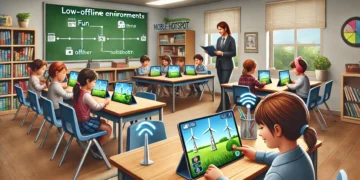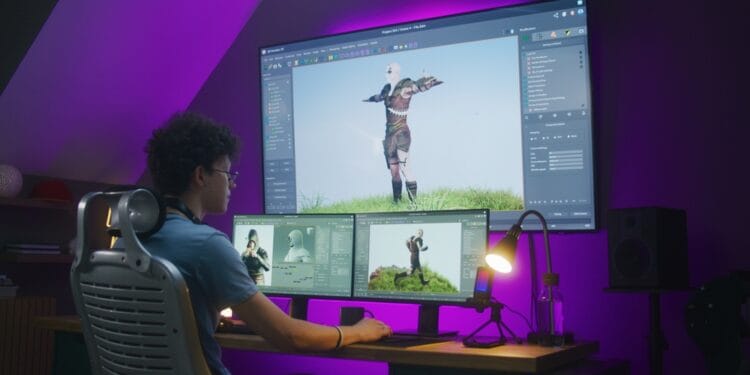The world of game design is at a transformative crossroads. Traditionally, game creation has been a domain fueled by human ingenuity, requiring designers to conceptualize immersive worlds, engaging narratives, and intricate gameplay mechanics. However, the rapid evolution of automation and Artificial Intelligence (AI) is reshaping this creative landscape. This shift introduces exciting opportunities and complex challenges, prompting industry professionals to reconsider the balance between human artistry and machine efficiency.
Automation in game design is not merely about simplifying workflows. It encompasses generative AI tools, procedural content creation, and advanced algorithms that can learn and adapt. These innovations empower creators to produce more ambitious games faster than ever. Yet, as machines become increasingly adept at tasks once reserved for humans, the role of creativity in game development must also evolve.
This article explores how creativity and automation intersect in game design, dissecting the tools, techniques, and philosophies shaping the industry’s future. By examining real-world examples, ethical implications, and the untapped potential of these technologies, we illuminate a path forward for this vibrant and ever-changing field.
The Role of Automation in Streamlining Game Development
Automation has become a cornerstone of modern game development, revolutionizing how designers approach complex and repetitive tasks. From generating expansive landscapes to automating quality assurance processes, technology is redefining efficiency.
One of the most significant applications of automation is procedural generation. Games like Minecraft and No Man’s Sky use algorithms to create vast, unique environments that would be impossible to design manually. By automating these processes, developers can focus on refining gameplay mechanics and narrative depth. This approach also enables studios to experiment with scale, offering players nearly infinite possibilities.
Beyond content creation, automation plays a vital role in testing and debugging. Traditional quality assurance methods require extensive manual input, often leading to human error. Automated testing tools, however, can simulate countless scenarios, identifying glitches and optimizing performance with remarkable precision. This reduces production timelines and enhances the overall player experience.
Despite these benefits, automation must be integrated thoughtfully. Overreliance on machine-driven processes risks homogenizing creative output. To strike a balance, developers must view automation as a complement to human ingenuity, leveraging it to amplify their vision rather than replace it.
Revolutionizing Game Development with AI
The rise of AI-driven tools is reshaping the game development landscape, offering unprecedented opportunities for creativity and innovation. Far from diminishing human input, these technologies foster a collaborative dynamic where human imagination converges with machine intelligence to produce groundbreaking gaming experiences.
Generative AI plays a pivotal role in this transformation. By analyzing extensive datasets, these models can suggest unique narratives, character designs, and visual styles, catalyzing creative inspiration. Platforms like RiseAngle’s AI Game Creator epitomize this potential, empowering individuals to bring their game ideas to life without requiring advanced coding skills or expensive resources.
Beyond content creation, AI tools are revolutionizing how games are tailored to players. Advanced algorithms analyze player behavior to uncover insights into preferences and engagement patterns. Developers can use this data to craft experiences that resonate deeply with their target audiences, ensuring their games are innovative and player-focused.
However, the integration of AI into creative workflows also raises critical questions. Issues surrounding authorship and intellectual property emerge as machines take on more substantive roles in game design. Ensuring that human artistry remains central to the creative process is essential, as is establishing frameworks for attributing credit fairly.
Procedural Generation: A Marriage of Art and Code
Procedural generation exemplifies the intersection of creativity and automation, blending artistry with algorithmic precision. This technique has become a hallmark of modern game design, enabling developers to produce expansive and dynamic content.
One of the key strengths of procedural generation is its ability to craft unique, replayable experiences. Games leveraging this technology can adapt to player choices, ensuring no two playthroughs are identical. This approach enhances replay value and encourages players to explore and experiment within game worlds, fostering a sense of discovery.
From a creative standpoint, procedural generation offers a canvas for experimentation. Designers can establish parameters that guide algorithms, shaping procedurally generated content’s aesthetic and structural elements. For instance, developers might use this technique to design randomized dungeon layouts while maintaining a cohesive visual theme.
Nonetheless, the reliance on procedural systems presents challenges. Without careful oversight, algorithmically generated content can feel disjointed or lack emotional depth. To mitigate this, developers must balance automation and intentionality, ensuring their creations remain meaningful and engaging.
Ethical Implications and the Human Element
As automation becomes more integrated into game design, ethical considerations emerge. The increasing role of AI raises questions about labor displacement, creative ownership, and the potential homogenization of artistic expression.
One pressing concern is the impact on employment within the industry. As machines take over tasks like asset creation and testing, some fear fewer opportunities for human designers and developers. To address this, industry leaders must focus on reskilling and upskilling workers, enabling them to harness new technologies effectively.
Another critical issue is the preservation of creative diversity. Automated systems often rely on existing data to generate new content, which can inadvertently perpetuate biases or lead to repetitive design patterns. Developers must remain vigilant, ensuring their tools reflect diverse perspectives and foster innovation rather than stagnation.
Ultimately, maintaining a human-centric approach to game design is essential. While automation can streamline workflows and enhance capabilities, human creativity infuses games with emotion, storytelling, and cultural significance. By prioritizing collaboration between humans and machines, the industry can navigate these ethical challenges effectively.
Case Studies: Success Stories at the Intersection
Several games exemplify the successful integration of creativity and automation, offering valuable insights into the potential of these technologies. These case studies highlight the transformative power of innovation when applied thoughtfully.
One standout example is Hellblade: Senua’s Sacrifice, which used AI-driven tools to create realistic facial animations. This approach allowed the development team to achieve cinematic-quality visuals on a relatively modest budget. The studio could focus on crafting a deeply emotional narrative by automating complex animation tasks.
Another notable case is Spelunky, a game renowned for its procedurally generated levels. The design team utilized algorithms to create levels that felt handcrafted, balancing challenge and accessibility. This marriage of automation and artistry resulted in a game celebrated for its innovation and replayability.
These examples underscore the importance of thoughtful implementation. When used strategically, automation and AI can elevate game design, enabling creators to achieve their artistic visions while pushing technical boundaries.
The Future of Game Design: Collaboration and Innovation
Looking ahead, the intersection of creativity and automation promises to profoundly reshape the game design landscape. As technology advances, the potential for collaboration between humans and machines will only grow, unlocking new frontiers for innovation.
Emerging trends, such as AI-driven adaptive storytelling and real-time world generation, hint at the possibilities. These technologies could enable games to respond dynamically to player actions, creating truly alive experiences. This represents an opportunity for developers to craft narratives and gameplay that evolve organically, enhancing player immersion.
To realize this potential, the industry must embrace a collaborative mindset. By viewing machines as partners rather than replacements, designers can leverage automation to amplify their creativity. This approach will require ongoing education and adaptation, ensuring that professionals have the skills to navigate a rapidly changing landscape.
Finally, combining creativity and automation in game design is not a zero-sum game. By embracing both strengths, the industry can forge a future where innovation and artistry coexist harmoniously, delivering experiences that captivate and inspire players worldwide.



























